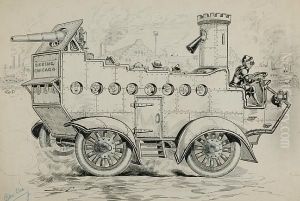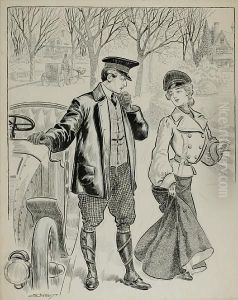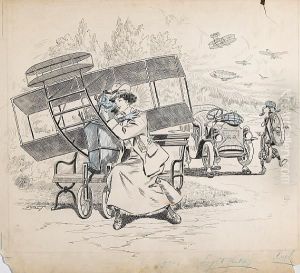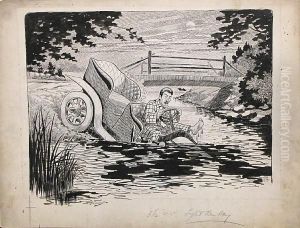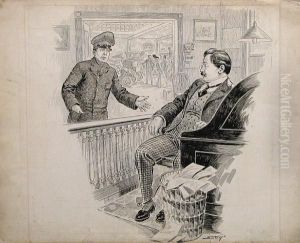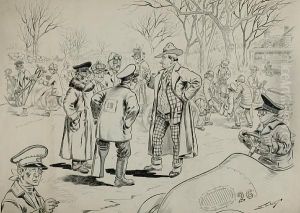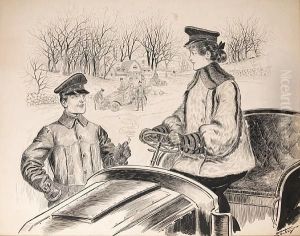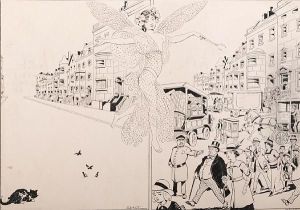Samuel D Ehrhart Paintings
Samuel D. Ehrhart was an American illustrator best known for his political cartoons and other illustrations that were featured in prominent publications of his time. Born on March 6, 1862, in Pottsville, Pennsylvania, Ehrhart showed artistic promise at a young age. He pursued his passion for art by studying at the Pennsylvania Academy of the Fine Arts in Philadelphia and later at the Académie Julian in Paris, which was a popular institution among American and international artists seeking professional art training.
Ehrhart's career as a cartoonist and illustrator took off in the late 19th and early 20th centuries, a period often referred to as the 'Golden Age of American Illustration.' During this time, he contributed to various magazines and periodicals, but most notably, he became a regular contributor to Puck magazine, a leading humor and satire publication of the era. Ehrhart's work for Puck included political cartoons that commented on the issues of the day, such as immigration, women's suffrage, and other social and political topics. His style was characterized by a combination of caricature and realism, often infused with a sense of humor that captured the public's attention and contributed to the national discourse.
Aside from his political cartoons, Ehrhart also created illustrations for advertisements, posters, and books. His versatility allowed him to work across different genres, including fashion, children's literature, and social commentary. He often employed a colorful palette and a keen eye for detail, which made his work stand out in the crowded field of illustration.
Samuel D. Ehrhart continued to work as an illustrator until his death on April 18, 1937, in Bronxville, New York. Throughout his career, he built a legacy as one of the prominent illustrators of his time, and his work remains an important part of the history of American political cartoons and illustration. Ehrhart's contributions to the field are often studied by art historians and enthusiasts who seek to understand the visual culture and societal issues of the late 19th and early 20th centuries.
